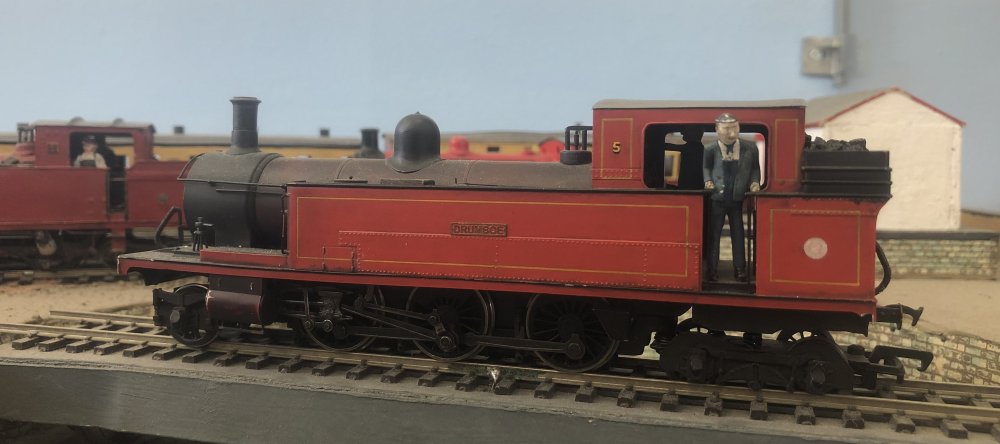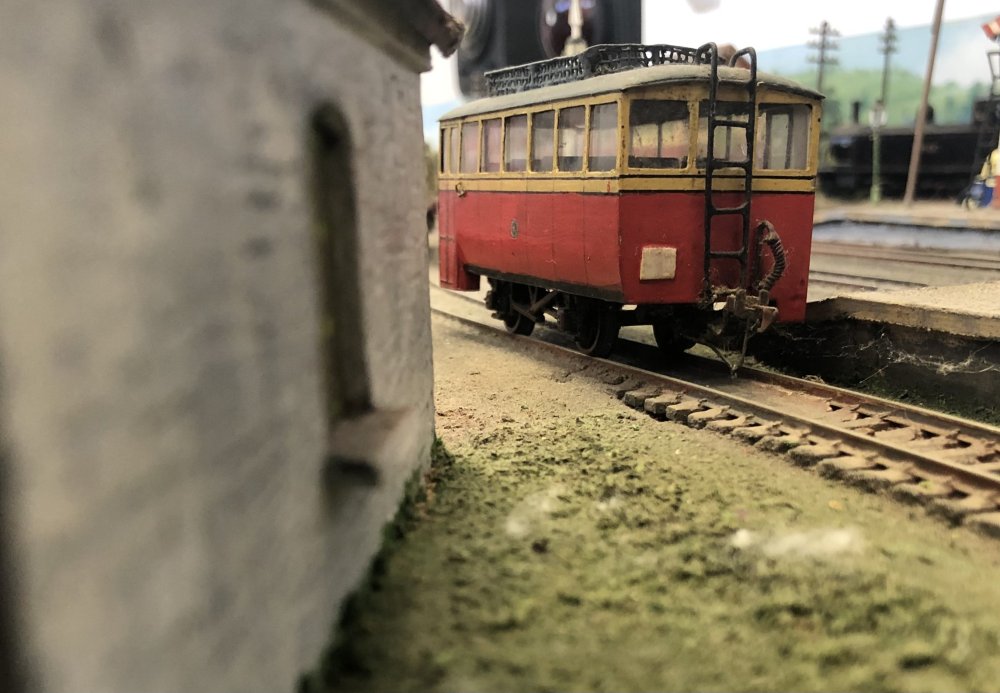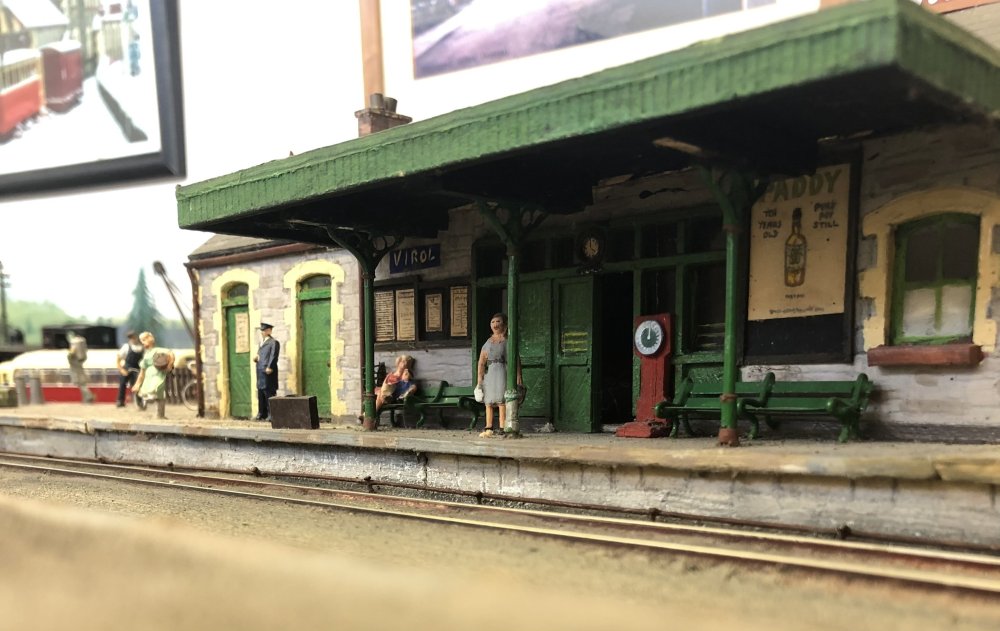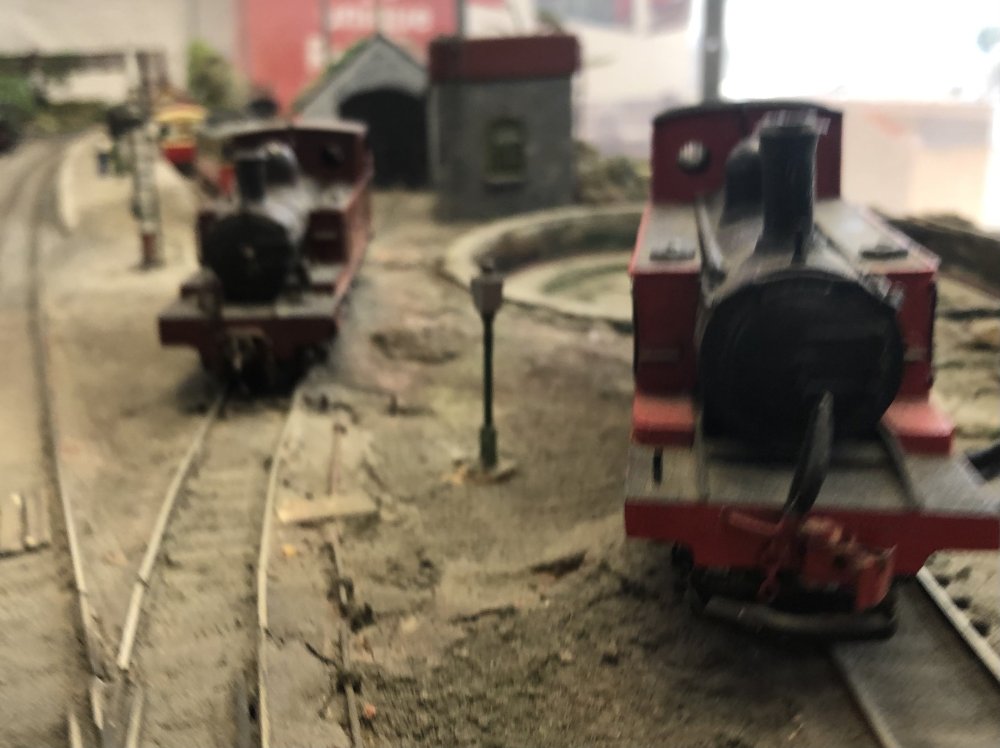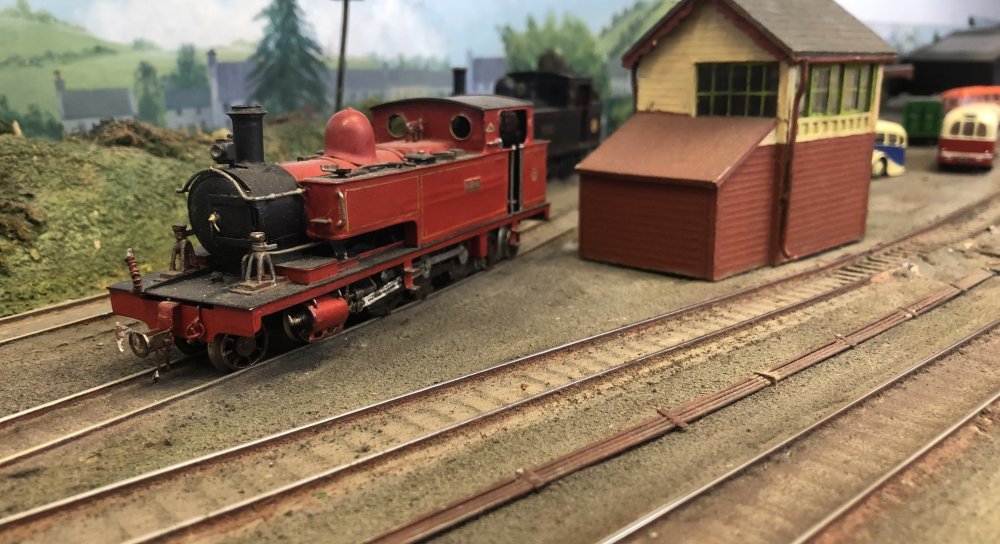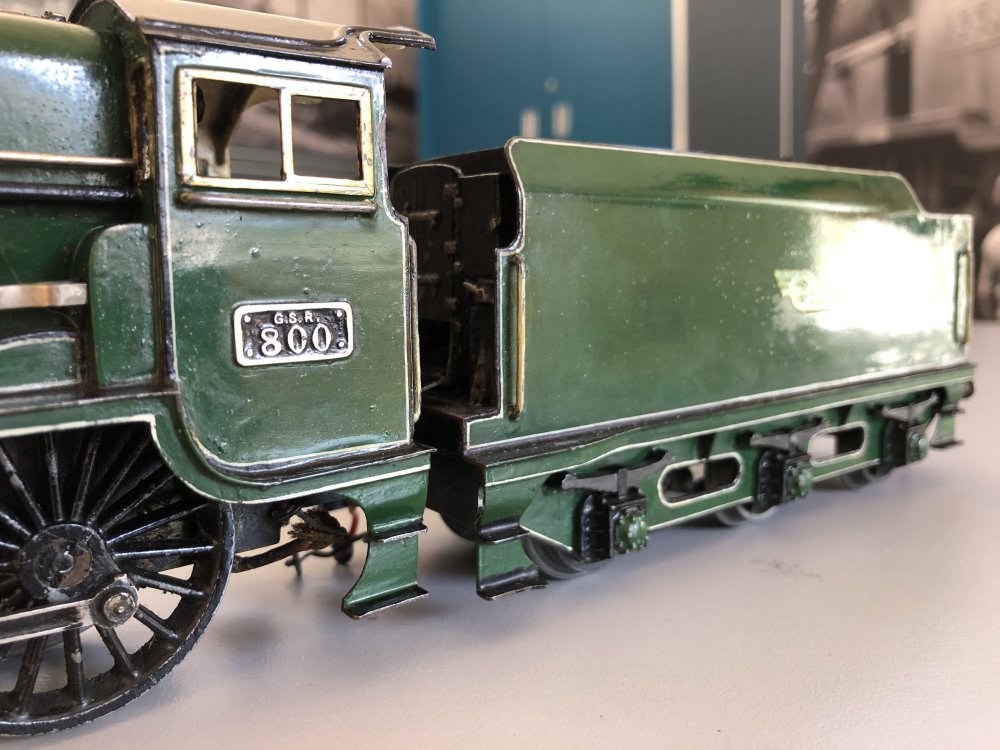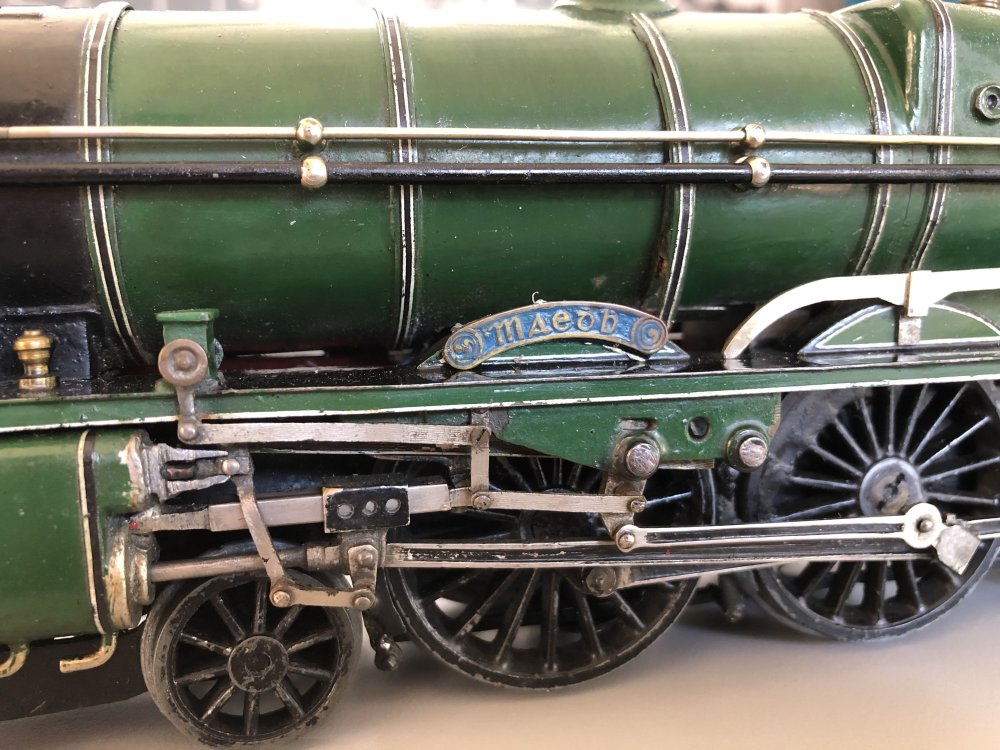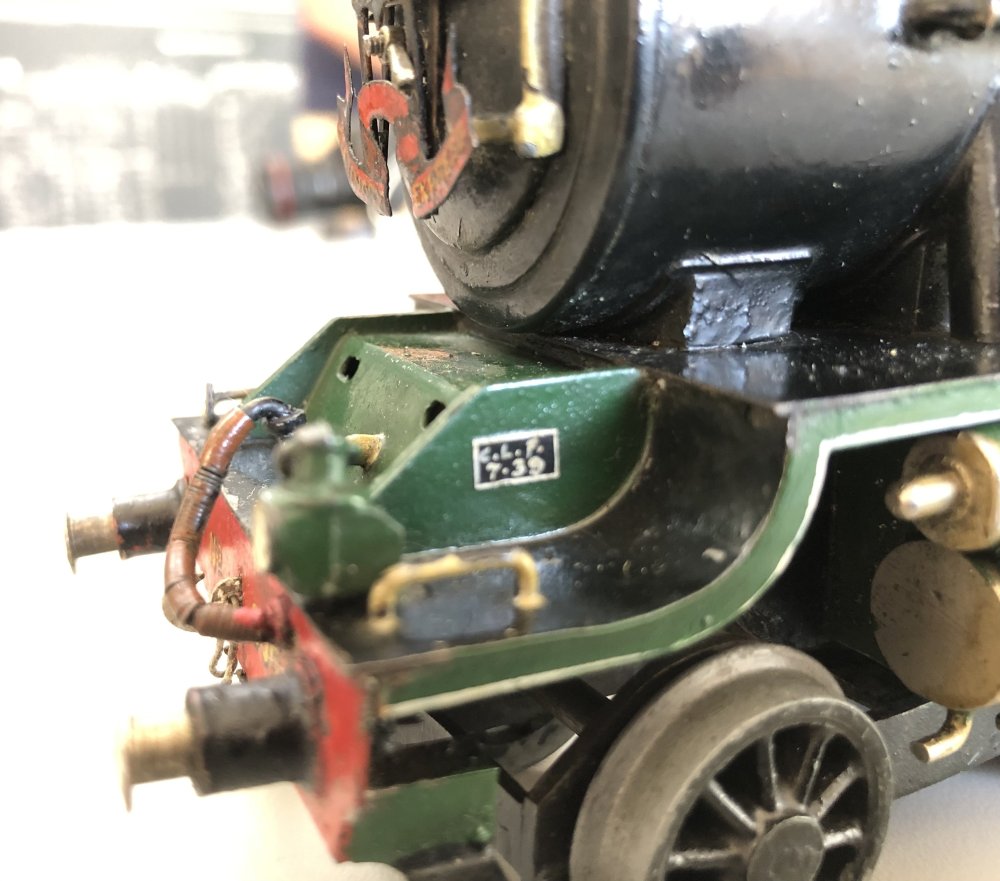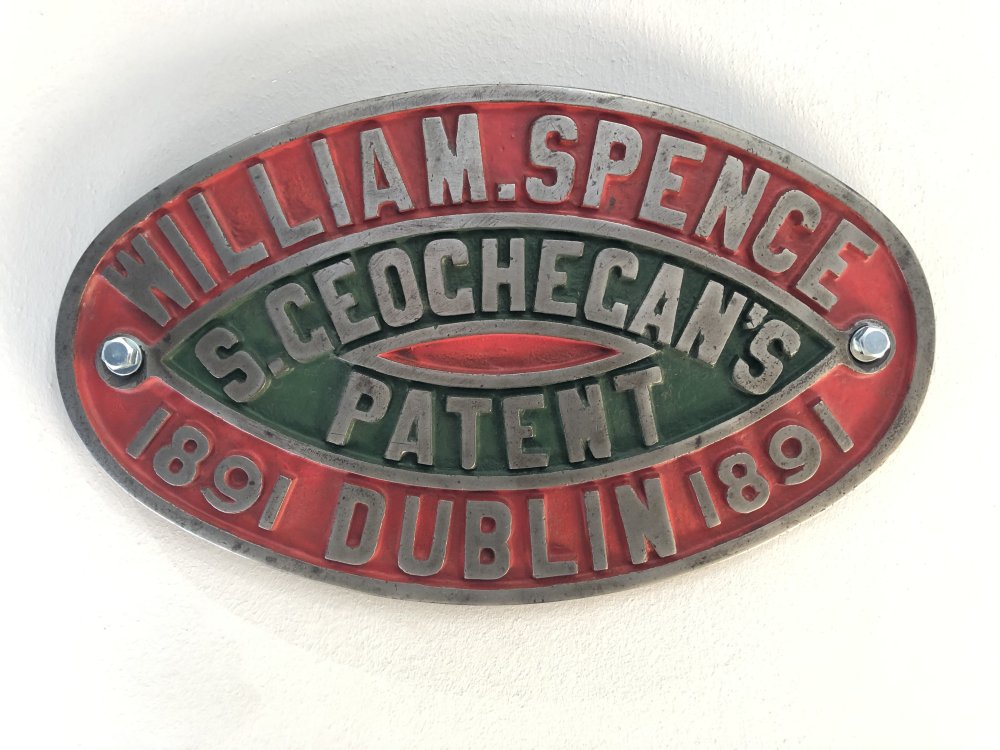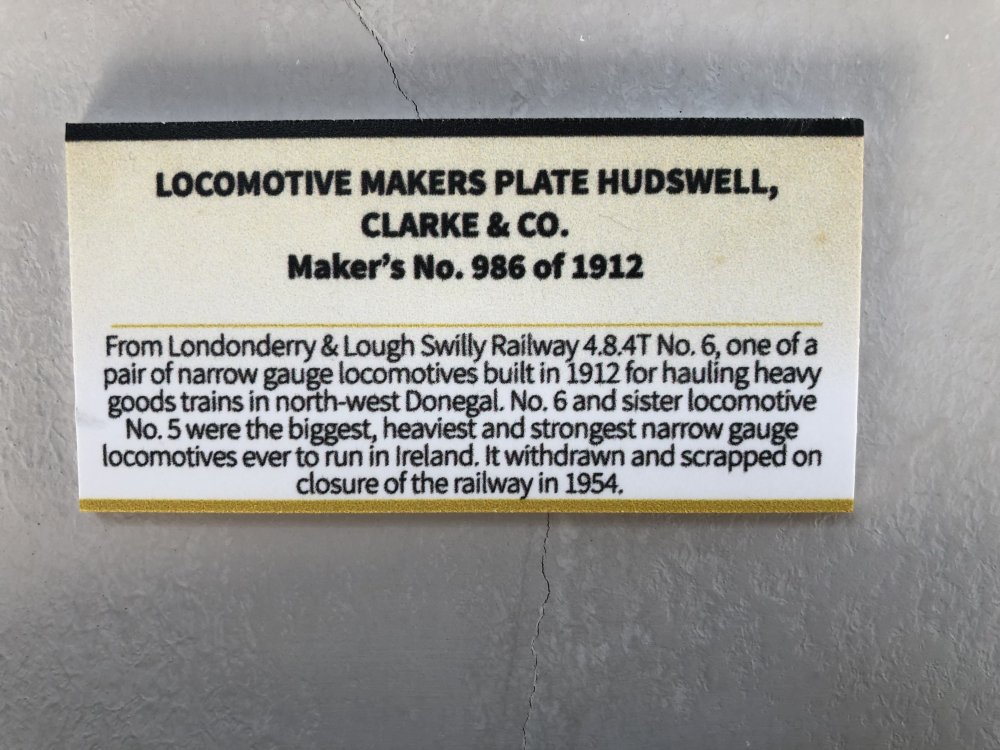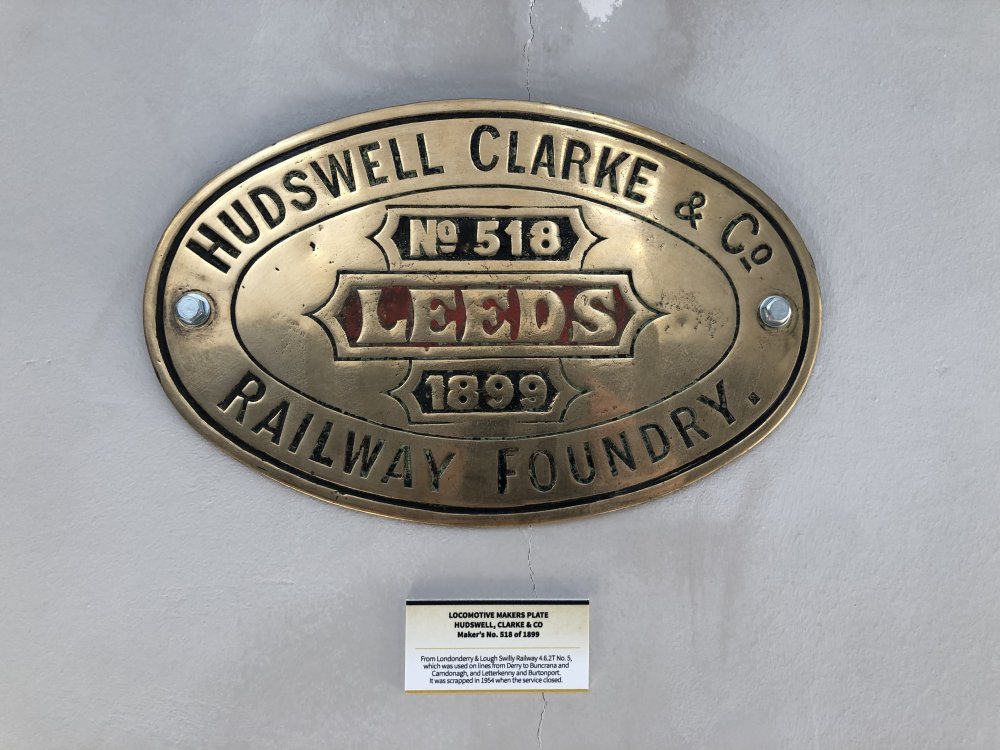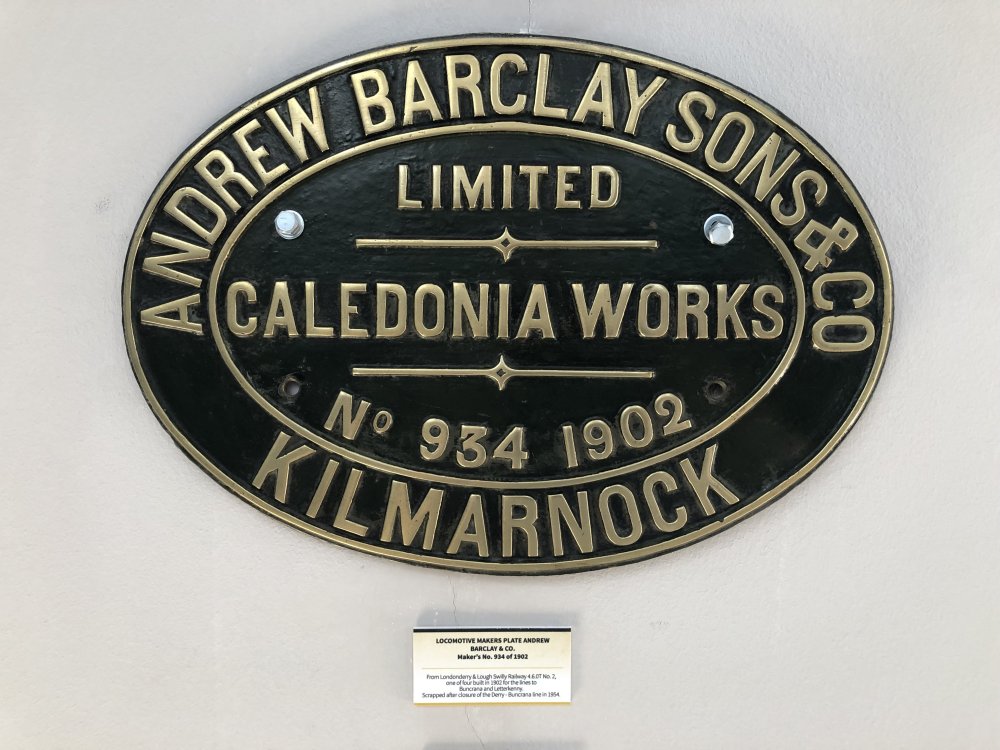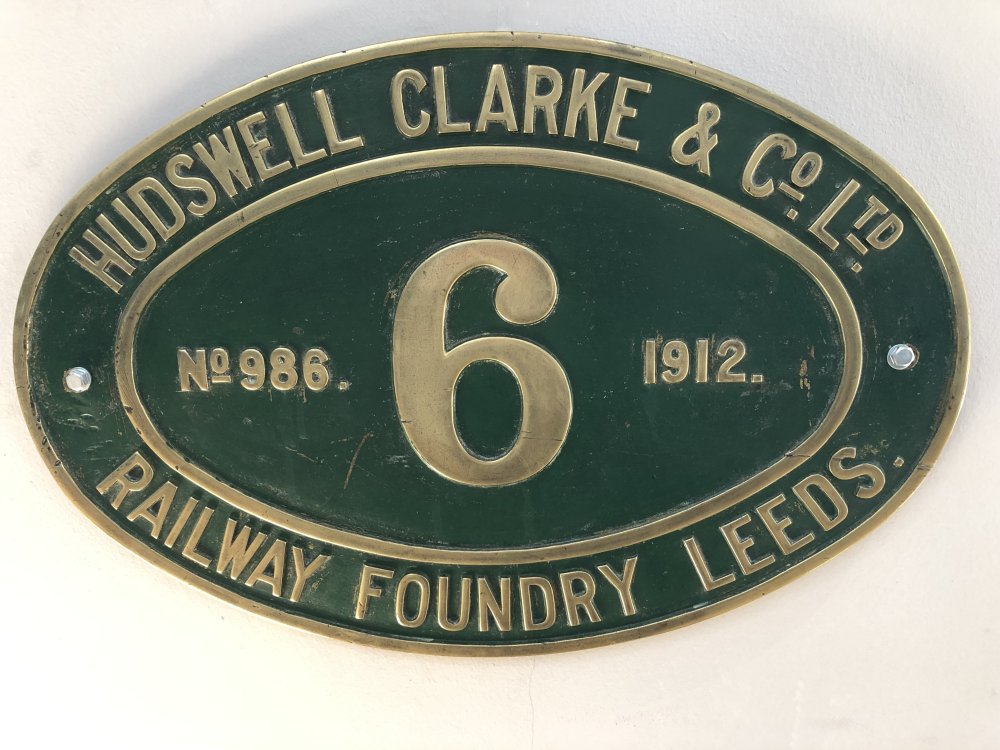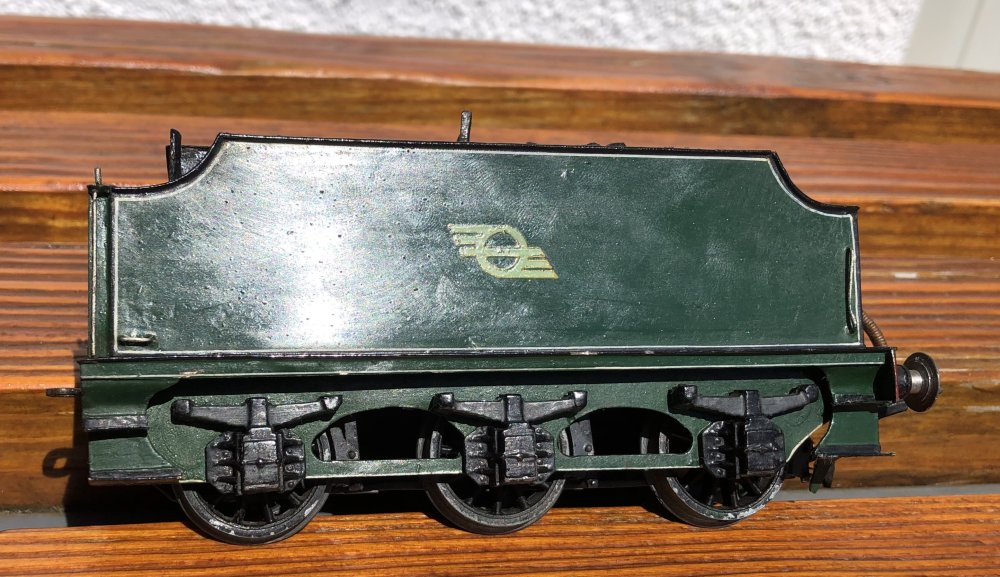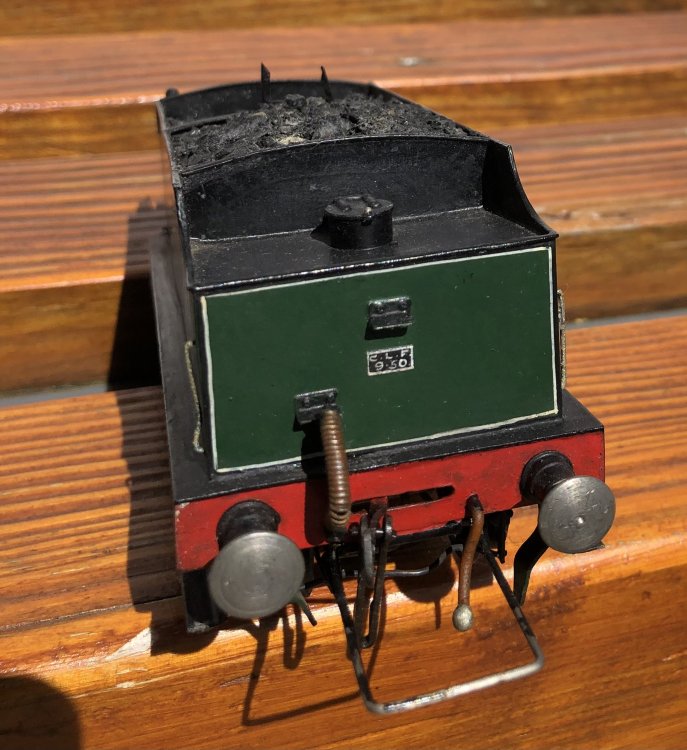-
Posts
15,872 -
Joined
-
Last visited
-
Days Won
393
Content Type
Profiles
Forums
Events
Gallery
Everything posted by jhb171achill
-
Thought you might! Superb stuff.......... wonder if IE will paint another one black'n'tan some day!
-
One of the orange ones is out'n'about this very day on the Taras; just saw it passing the house with Navan-bound empties as I was reading this post just now!
-
Every detail of that layout represents what we must all aspire to - from concept, to historical accuracy, to technical brilliance, to layout, to scenic splendour...... keep it coming! All you need to complete it is a small blue mini car with a "VIM" registration on a platform, with a youthful Barry Carse taking pictures for a future book 40 years into the future!
-
A few from the CDR-inspired layout there, which includes an extensive model of Donegal station itself. I was up for the book launch of Airfixfan’s latest photo album book of the railways of the area. The Centre desperately needs financial support, so (while I’m not involved in it personally), I would still strongly recommend a visit. Also, order the book from the centre.
- 5 replies
-
- 17
-

-

-

-
Yes, he was indeed extremely knowledgeable about the engineering / operational aspect of steam locomotives. I wonder if he knew Cyril Fry!
-
OUTSTANDINGLY good!
-
The loco numberplate off LLSR No. 6 has the correct LLSR green on it, by the way.
-
“Maedb” was out of its glass case today for photographing. A few shots of detail, also showing what CIE loco green looks like in direct sunlight…. A few of the wall display items too….
- 101 replies
-
- 13
-

-

-
Some of the earlier Donegal railcars, converted from British standard gauge rail buses, or road buses….
-
Wow! An interesting beast indeed! This side of the pond, the Atkinson Walker steam tractor converted to a diesel shunter by the CDR springs to mind as an equal in oddness…..
-
Live steam and specially commissioned; not surprised at the price tag. Stunning model.
-
A kit absolutely crying out to be made!
-
Not necessarily; could be old livery living on? Even though the Midland abandoned green entirely about 1915-18, and everything newly painted was lined black after that, Bob Clements noted one 0.6.0 still in green into the early 1930s! It was, in fact, the last MGWR loco to be sheep-dipped grey.
-
Yes, it refers to late 1890s to 1915, though with some examples temporarily in the blue livery 1903-5 or 6. Ahrons was lucky to witness matters pre-1890; it was at about this time that frames became brown on most cases. Some goods-only locos were plain black BY about 1915, I have heard from one unconfirmed source.
-
Superb!!!!
-
Thanks - excellent stuff, folks; yes, I suspected N might be better.
-
Question - I have heard that in order to look somewhat "past its best", N gauge ballast is suitable for 00 scale track, perhaps with small amounts of 00 scale ballast scattered here and there too. I would be interested if anyone could point me in the direction of photos of track done in this way. Quite soon, I will have a serious amount of ballasting and scenics to do, and I want certain sidings to look prototypically neglected, with main running lines varying from old to pretty good and well kept. Any thoughts / ideas / photos very welcome.
-
Northern Ireland lignite traffic
jhb171achill replied to Bóithre Iarainn's question in Questions & Answers
Yes, more 071s might have been a compromise; bear in mind that these matters were decided by politicians, rather than anyone who knew anything about the industry, or railways! An earlier version of 201s, perhaps..... Those ex-"C" class B201s could have double headed ti get things started, I suppose. Always thought that a layout based on 1980s / 90s NIR but with internal freight and lots of locos would make an interesting project - Hunslets, ex-CIE "C"s, the English Electric shunters, a "celebrity" "WT" class 2.6.4T, and 111s.....anything would improve the monotony of nothing but 70, 80 & Castle class railcars! -
Aha! A Belpaire, or indeed any, J15, has me sorted for birthday AND Christmas!
-
Looks very convincing indeed!
-
Boris someone?
-
They don't carry out any regular timetabled duties at all, nor have they done so for many years. Best option is to find out what PW work that NIR have planned, as they will be used on things like ballast trains.
.png.c363cdf5c3fb7955cd92a55eb6dbbae0.png)

